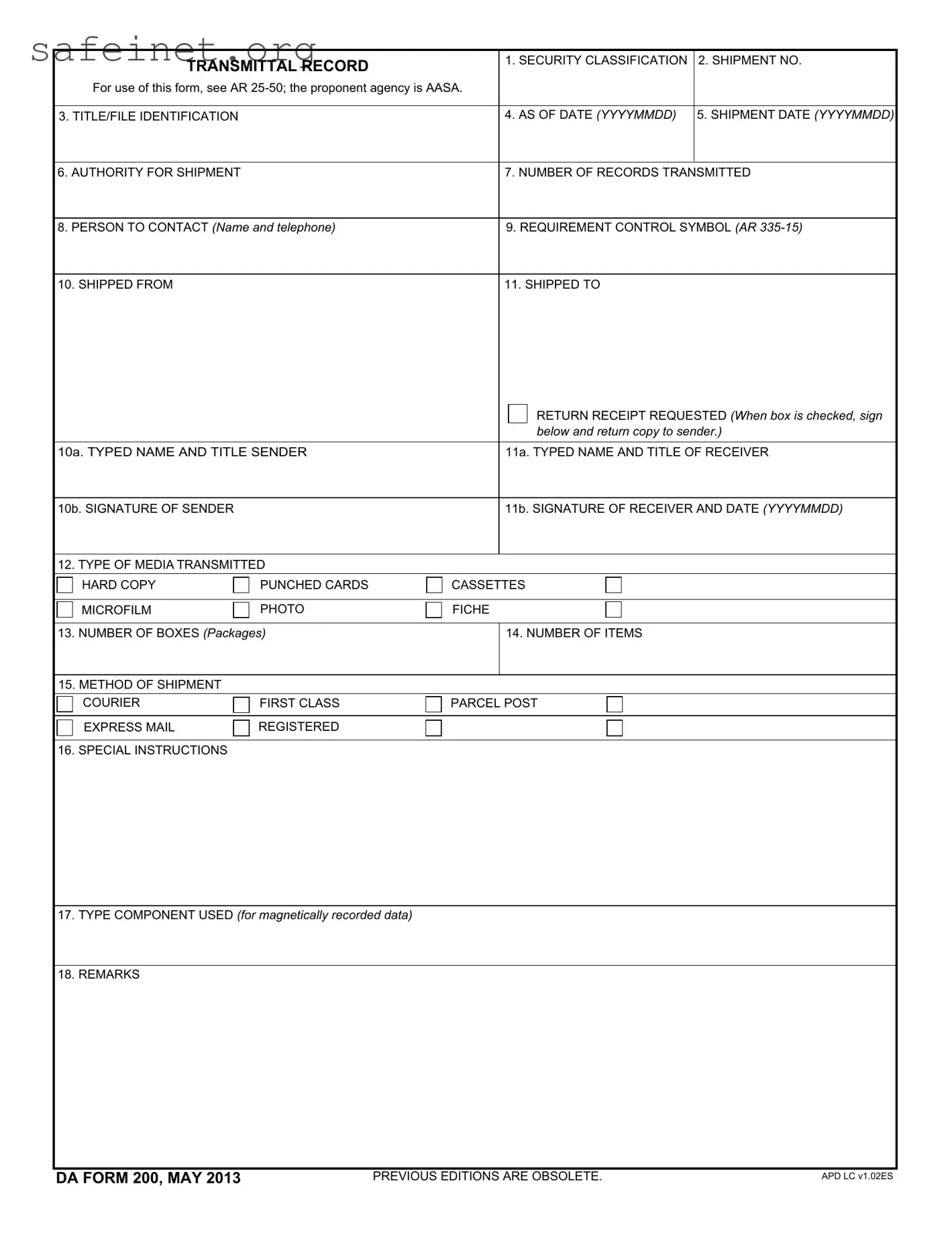The DA 3949 form, known as the Transmittal of Official Government Information, is often used in military settings to convey important documents. Like the DA 200, it includes details about the shipment, such as sender and receiver information. Both forms require signatures to confirm receipt, ensuring accountability for documents exchanged, which is essential in maintaining the integrity of sensitive information.
The SF 135 form is the Records Transmittal and Receipt form, used primarily for transferring government records. Similar to the DA 200, it includes details about the records being shipped and requires a receiver's signature. Both forms serve to document the transfer of records, making it easier to track and manage sensitive materials, ensuring compliance with retention policies.
The DA 3161 form, which is used for requisitioning and issuing supplies, shares structural similarities with the DA 200. It contains fields for sender and receiver information, and both forms provide for tracking the items involved in the shipment. Accountability is a key feature in both, as they both require signatures to confirm receipt and verify that items were sent as requested.
The DD Form 250 is another related document, often used for contract deliveries. Like DA 200, it serves the purpose of verifying shipments and includes essential details, such as shipping dates and points of contact. Both forms help facilitate communication between parties, and they each require acknowledgment upon receipt, fostering transparency in the delivery process.
The SF 1423 is a Physical Inventory Report form that records inventory details, which resembles the DA 200 in its approach to documenting shipments. Both forms require clear identification of items being transferred and mandate confirmation from the receiving party. This helps maintain accurate records during handovers, which is crucial in a government context.
The DA Form 4000, used to record the transfer of property, has a similar purpose to the DA 200. It involves documenting transactions and includes necessary recipient and sender information. Both documents emphasize the importance of accountability and traceability, ensuring that property is effectively tracked during transitions.
The DA Form 7532 serves as a Storage Facility Record and bears similarities to the DA 200 concerning structure and information required. Each of these forms includes essential data for tracking shipments and maintaining clear communication between involved parties. Signatures are also a common requirement, establishing confirmation of receipt between senders and receivers.
The AF Form 310, used for reporting the transfer of documents, mirrors the DA 200's focus on ensuring accountability in the transmission process. Both forms contain sections that detail shipment particulars and require the acknowledgment from both parties involved. The common goal of ensuring the secure transfer of information makes their functions alike.
The DD Form 1149, which is used for requisitioning property, can be compared to the DA 200 in its emphasis on the shipment and receipt of inventory. Both forms prioritize having clear records of exchange and require signatures for confirmation. This enhances reliability in handling sensitive materials while keeping both senders and receivers informed.
Lastly, the DA 1687, which is an authorization for disinterested parties to receive property, shares structural elements with the DA 200. Both forms require clear identification of the parties involved and a signature to confirm receipt. This consistency in format helps keep transfers organized and accountable in a military logistics context.

